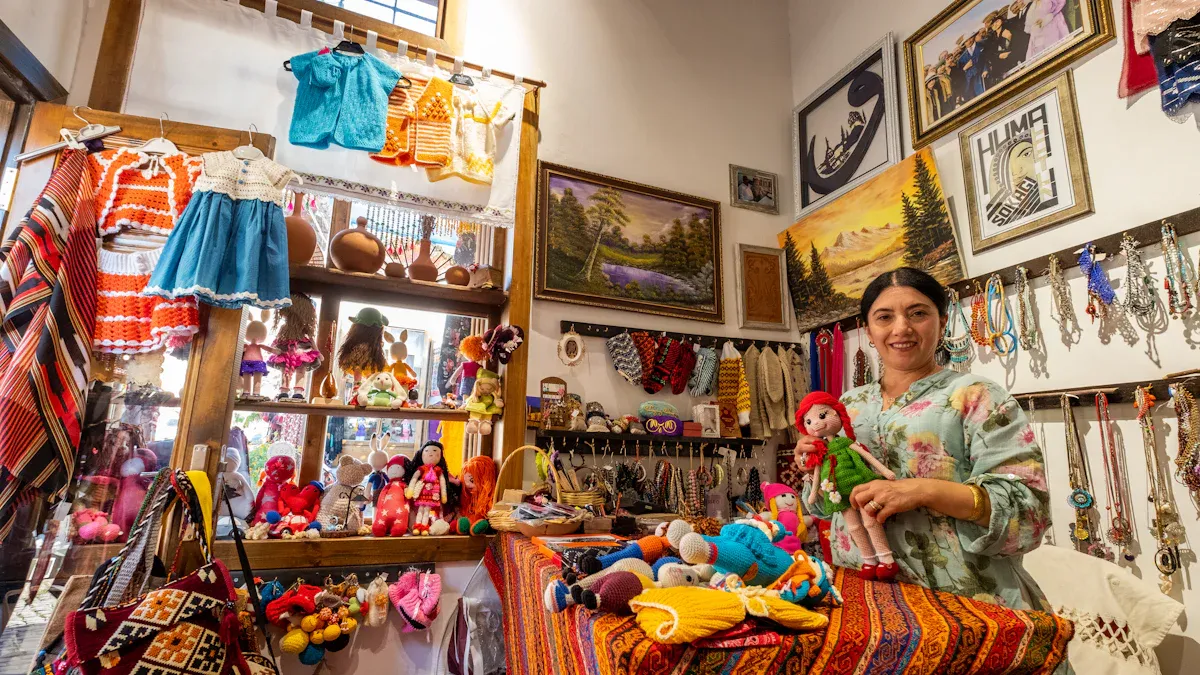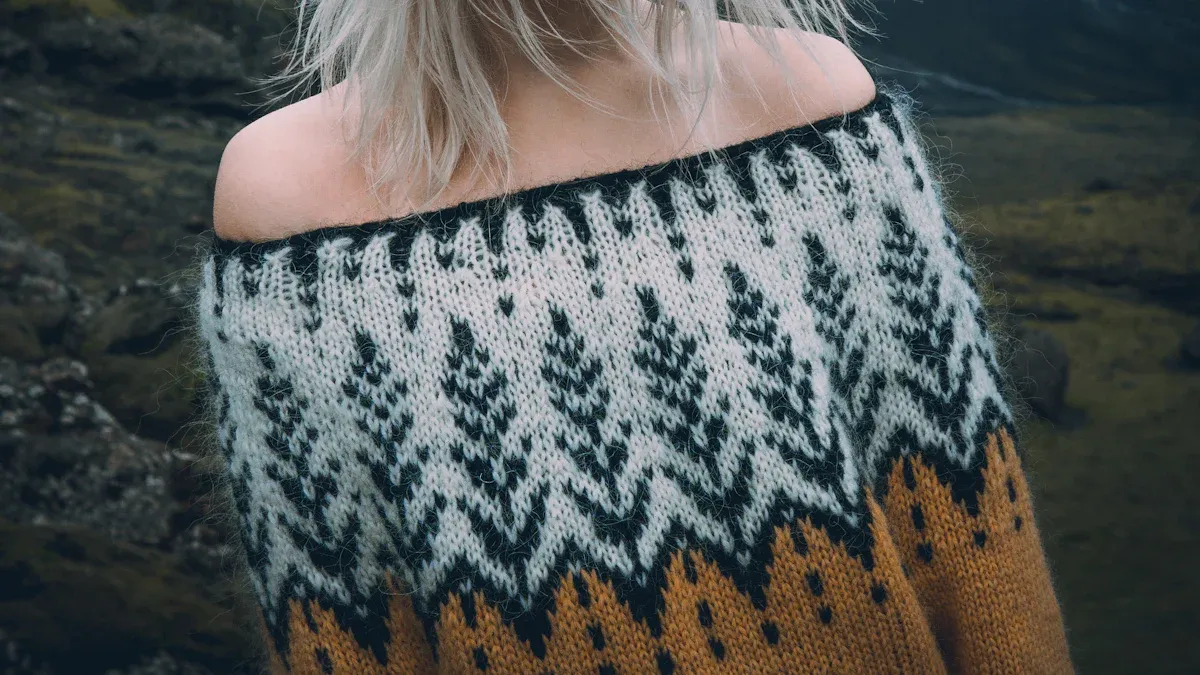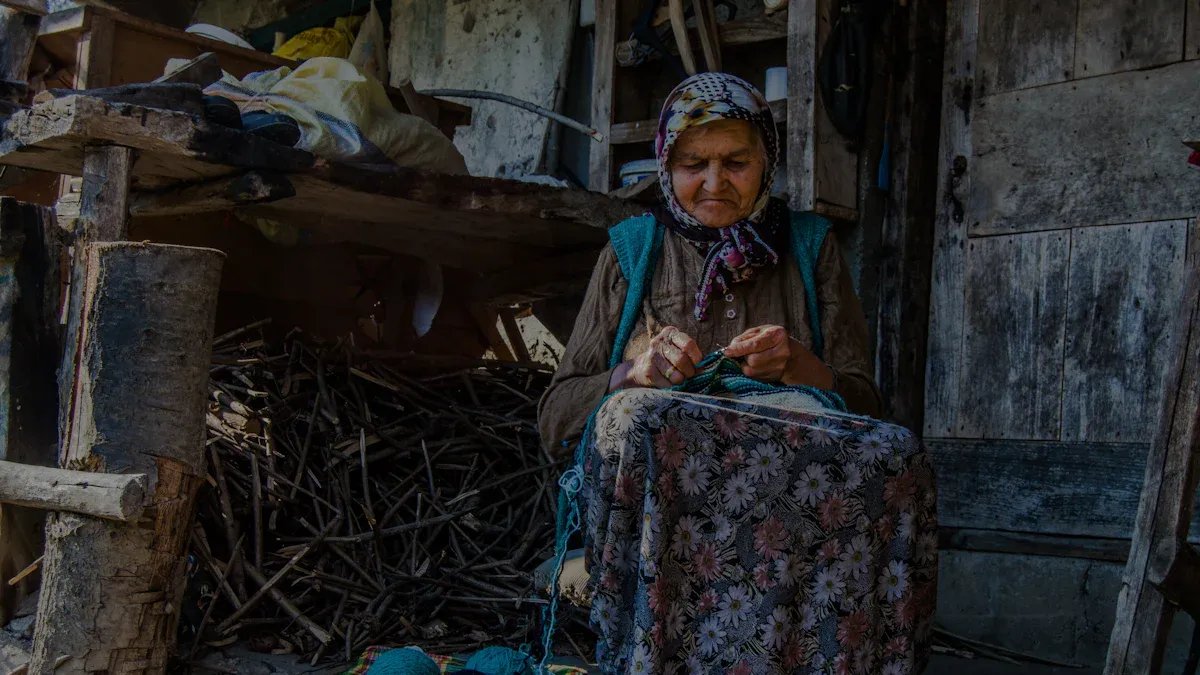
Norway is the country most known for knitting. Many people ask, “which country is famous for knitting?” Most people say Norway because it has a long history with knitting. Norway also has special patterns from different regions. Oslo is called the knitting capital of the world. This shows how important knitting is in Norway every day. Other countries do not compare in the same way. Norway is famous around the world for its knitting tradition. Its style and ideas spread to many other places. Norway helps shape how people knit everywhere.
Key Takeaways
Norway is best known for knitting because it has a long history. It also has special patterns like the Marius Sweater and Selburose. Knitting is very important in Norwegian culture. Many people knit every day. Families teach knitting skills to each other. Norway is very cold, so people need warm wool clothes. These clothes are useful and look nice. People use wool from sheep that live in Norway. The knitting community in Norway is very busy. There are events, shops, and festivals for knitting. These things help keep old traditions alive. They also help people meet and share. Norwegian knitting has inspired people all over the world. It mixes old patterns with new styles. This helps make the future of knitting.
Which Country Is Famous for Knitting?
Answer
A lot of people want to know, “which country is famous for knitting?” Norway is the main answer. Knitting has been important in Norway for hundreds of years. Norwegian knitters make special patterns that many people know. These patterns are seen on sweaters, mittens, and hats. The Marius Sweater became well-known after a 1953 movie. This sweater made Norwegian knitting styles popular in other countries.
Norway is very cold, so people needed warm clothes. They used wool to make these clothes for winter. Later, these clothes became a big part of Norwegian culture. Many people still ask, “which country is famous for knitting?” Norway is still the answer because of its long history and big impact on knitting everywhere.
Reputation
Norway is famous for knitting because of its old traditions and new ideas. Oslo, the capital, is called the “knitting capital of the world.” There are a few reasons for this:
Almost half of women in Norway knit, and many young women keep knitting.
Oslo has lots of yarn shops and makes its own wool, so supplies are easy to find.
The city has a “yarn store crawl” map for visitors who want to see the knitting scene.
Events like knit nights and the Oslo Knitting Festival help people share their love for knitting.
Some Norwegian designers have won big awards. For example, Arne & Carlos got Norway’s top arts and crafts medal in 2010. Queen Sonja of Norway was at the award event. This shows that Norway cares a lot about its knitting and that its designers are important around the world.
Many Norwegian knitting patterns are famous in other countries. The table below lists some of the best-known designs:
Pattern Name | Designer/Source | Description/Notes |
|---|---|---|
Marius Sweater | Marius Eriksen | Famous pattern, loved since 1953, helped make Norwegian knitting known everywhere. |
Winters Night Enchantment | DROPS Design | Nordic sweater, comes in many sizes and colors. |
Lusekofte-sque Mitts | Mary Rourke | Classic Norwegian fingerless mittens. |
Skadi Wishes for Snow | Lanja Khon-Engheim | Winter hat with Sami mitten designs. |
Norwegian Alphabet Blanket | Jorid Linvik | Baby blanket with Norwegian alphabet. |
These patterns use the Scandinavian knitting method. This helps knitters make colorful and detailed designs. People from many places want to learn these skills because they like Norwegian styles.
Norway’s knitting is known all over the world. When people ask, “which country is famous for knitting?” most think of Norway first. The country’s patterns, designers, and strong knitting community make it a leader in knitting.
Why Norway Stands Out

History
Norway has a long history with knitting. People found old knitted clothes from the 1400s and 1500s. Small towns like Selbu made their own patterns and styles. The Setesdal Lusekofte and Fana Fanacofte sweaters are known for their special looks. In 1857, Marit Emstad wore black-and-white Selbu mittens. This made the selburose pattern famous in Norway. Today, Selbu has over 300 mitten patterns. Companies like Dale of Norway and Rauma Garn help keep these traditions alive. They also share them with people everywhere. Norwegian knitting started in small towns. Now, it is a craft that shows pride and culture.
Traditions
Knitting is not just a hobby in Norway. It is part of daily life and family time. Many kids learn to knit from parents or grandparents. Sweater vests called kofter and mittens called votter have special patterns. People know these patterns right away. These clothes are very popular in winter. The Bunad is a special dress for big events like May 17th. Knitted patterns also show where people come from. Knitting brings families together and helps Norwegians celebrate their culture.
Knitting in Norway keeps old ways alive. It helps people teach skills to the next generation.
Climate
Norway has cold winters, so people need warm clothes.
Wool sweaters like the Setesdalsgenser have black and white “lice” patterns.
Sheep breeds like the Spælsau give wool that keeps people warm.
Women often knit together to make clothes for their families.
Using natural wool and smart designs helped people live in the cold.
These patterns are loved for being warm and pretty.
Sheep farming and making wool are still important in Norway.
Knitting in Norway started to help people stay warm. Now, it also means community and creativity.
Global Impact
Norwegian knitting has changed how people knit around the world. Designers like Arne and Carlos use old patterns and new ideas. They look at old crafts and folk art, then add new colors and styles. Their work makes knitters everywhere want to try Norwegian patterns. Many people outside Norway use these designs in their own projects. Norwegian knitting shows how a local craft can become popular everywhere. Norway’s focus on quality and tradition keeps its knitting loved worldwide.
Norwegian knitting patterns inspire knitters in many countries. They help shape the future of knitting.
Knitting Around the World

Iceland
Iceland is known for its knitting. The lopapeysa is a famous Icelandic sweater. It has a round yoke and uses thick, unspun wool called lopi. Lopi comes from Icelandic sheep. This wool keeps people warm, even if it gets wet. The sweater has a circle design around the neck. The sleeves are added without seams. Many people in Iceland like to knit. In 2022, Iceland had 678 knitting projects for every 100,000 people. Norway had 524 projects for the same number of people.
Country | Knitting Projects per 100,000 People (2022) |
|---|---|
Iceland | 678 |
Norway | 524 |
Norway makes more knitted clothes by value. But people in Iceland knit more often. The lopapeysa is a symbol of Iceland. Its patterns come from Greenlandic and Norwegian styles. But it uses Icelandic wool and a special round shape.
British Isles and Ireland
The British Isles have well-known knitting styles. Ireland and Scotland are famous for their knitting. In Ireland, the Aran jumper started on the Aran Islands. Women made these sweaters for fishermen. The sweaters kept them warm from cold sea winds. Aran jumpers use stitches like honeycombs and cables. These patterns are part of Irish culture. In the 1950s, Irish jumpers became popular in the United States. Today, most Aran jumpers are made by machines. Hand-knitted ones are rare and worth a lot.
In Scotland, Shetland and Fair Isle knitters use many colors. They make sweaters, hats, and scarves with shapes and patterns. The Shetland Knitwear Trades Association protects these designs. Both men and women knit in these places. This keeps the tradition going.
The British Isles use color shading and shapes in their designs. Norway uses stranded colorwork and textured sweaters.
Germany and Europe
Germany and other European countries have their own knitting ways. In Germany, people care about making yarn and knitting fast. European knitters hold and move yarn in different ways. English knitters “throw” yarn with the right hand. Continental knitters “pick” yarn with the left hand. Norwegian knitting is a kind of Continental knitting. The yarn stays at the back for both knit and purl stitches. This makes knitting quicker and easier. Portuguese knitting is another style. The yarn goes around the neck and stays in front.
Europe has many knitting styles. Norway’s way is fast and has special patterns.
Asia and Production
Asian countries are important in knitting today. Factories in China, India, and Bangladesh make lots of knitted clothes. These countries focus on making many items, not on old patterns. Most of the world’s knitted clothes come from Asia. But the special meaning and designs from Norway, Iceland, and the British Isles are not common in Asia.
Norway is special because of its strong culture, patterns, and community. Other countries may knit or make more, but Norway’s knitting is known for its history and style.
Knitting in Norway Today
Modern Practices
Knitting is still very popular in Norway. People see it as a fun hobby and a way to remember old traditions. In 2016, almost half of Norwegian women knitted. When COVID-19 happened, even more people started knitting. Stores sold more yarn and tools. Young people and new groups joined in, so more people are interested now.
Many people knit at home or with friends.
Schools and centers teach knitting classes.
Social media lets knitters share ideas and patterns.
Norwegian knitters use both old and new ways to knit. They like to use wool from Norway. Seamless knitting and textured stitches help make clothes warm and stylish. Today’s knitters mix old styles with new colors and shapes.
Community and Events
Norway’s knitting community is friendly and busy. Oslo is a big place for knitters. The city has many yarn shops and holds special events. People meet for knit nights, workshops, and festivals.
Event Name | Location | Activities & Features |
|---|---|---|
Salhus, Bergen | Workshops, talks, big yarn market, local sellers, and a cozy festival feel | |
Andalsnes, Norway | Eight-day trip with classes, wool mill visits, farm tours, felting, cooking, hiking, and sightseeing |
These events bring knitters together from all over Norway and other places. People learn new things and celebrate their love for knitting.
Norway’s knitting community cares about tradition and friendship. Festivals and group events help keep knitting strong.
Unique Styles
Modern Norwegian knitting is known for its good quality and cool designs. Knitters use real Norwegian wool that is soft and warm. They make clothes with textured patterns, twisted ribbing, and seamless shapes. Many patterns show nature or use geometric designs. New styles often mix old ideas with new colors and fits.
Designers mix folk art with today’s fashion.
Brands like Oleana and Sandnes Garn use eco-friendly materials.
New patterns, like the Nordic Bloom vest, show how old and new styles come together.
Norwegian knitting is about being warm, useful, and pretty. The knitting community honors old ways but also tries new things.
Norway is the most well-known country for knitting. It has many special patterns and a strong culture. Experts talk about the Selburose motif. This design stands for bravery and togetherness in Norway. People keep the tradition alive with wool crafts and workshops. There are also projects that connect people around the world. Norway is still a leader in knitting today. Its old ways inspire young people to learn. Norway’s special history and worldwide influence make it important in handmade art.
FAQ
What makes Norwegian knitting patterns unique?
Norwegian knitting patterns use bright colors and bold shapes. Many designs, like the Selburose, mean something special in Norway. These patterns help people know Norwegian knitting everywhere.
Why do Norwegians use wool for knitting?
Wool keeps people warm during Norway’s cold winters. Norwegian sheep give wool that is strong and soft. Knitters pick wool because it lasts and feels nice to wear.
Can beginners learn Norwegian knitting?
Yes! Many beginners start with easy patterns. Norwegian knitting has simple steps and clear directions. People can watch videos or read books to learn. With practice, new knitters get better fast.
How has Norwegian knitting influenced other countries?
Designers in many places use Norwegian patterns for sweaters and hats. The Marius Sweater and Selburose design are seen in fashion around the world. Norwegian knitting inspires both old and new styles.









